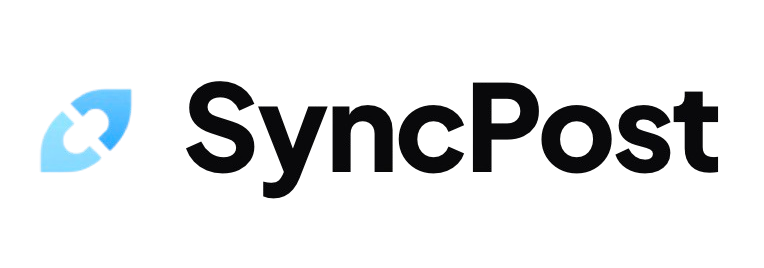
Why Social Media Management Matters
Social media has become a must-have for any business wanting to stay in touch with customers today. Your customers spend hours each day on different social platforms, making them perfect spots to show what makes your brand special.
You might think keeping up with Facebook, Instagram, and Twitter is too much work for your busy schedule. The truth is, you don't need to spend your whole day on social media to make it work for your business. With the right tools and planning, you can handle all your social media tasks in just a few hours each week.
Social media tools can help you schedule posts ahead of time and track how well they perform. These solutions make it simple to manage multiple accounts from one place, giving you more time to focus on growing your business.
Platform Diversification Strategy
Being active on multiple social platforms helps you reach more people who might be interested in what you offer. Your chances of growing a loyal following increase when you're available where your audience likes to spend their time.
Finding the right platforms for your content starts with understanding where your target audience hangs out online. You should focus on platforms that match both your content type and your audience's preferences, rather than trying to be everywhere at once. The key is to pick 2-3 platforms where you can consistently show up and engage with your followers.
You can save time by adapting your content to work well on different platforms instead of creating completely new content for each one. Tools like SyncPost can help you maintain a consistent presence across platforms like Twitter and Bluesky, making it easier to manage your social media strategy.
Content Planning Framework
Creating a content planning system starts with setting up a simple calendar and topic list you can maintain long-term. Your system should include clear goals for each piece of content and specific deadlines that match your available time and resources. This approach helps you stay organized while maintaining a steady flow of content without burning out.
Many content creators think they need fresh, original ideas every single day to succeed. The truth is that effective content often comes from improving, updating, and expanding your existing work rather than constantly chasing new topics.
You can turn one main piece of content into multiple formats - like changing a blog post into social media updates, videos, or email newsletters. Setting fixed times for content creation and using scheduling tools helps you maintain consistency without feeling overwhelmed.

Automation Tools Integration
Managing multiple social media accounts takes a lot of time and effort each day. Automation tools help you schedule posts, track engagement, and respond to common questions, letting you focus on creating better content.
You might worry that using automation will make your social media presence feel robotic or distant from your audience. The key is to use automation for repetitive tasks while keeping your personal touch in content creation and community interactions. Remember that automation tools are meant to support your creativity, not replace it.
When picking automation tools, start with the features you need most, like post scheduling or analytics tracking. You can then slowly add more tools as your social media presence grows, making sure each new addition fits well with your existing workflow.
Engagement Optimization
Real engagement on social media means creating genuine connections with your followers through meaningful interactions and valuable content. Your success on social platforms depends on how well you can spark and maintain authentic conversations with your audience.
Many people think social media success requires you to be glued to your phone all day, every day. You can actually maintain strong engagement by setting aside specific times for meaningful interactions with your followers. Smart planning lets you focus on quality responses rather than rushing to reply to every notification instantly.
You can use scheduling tools to plan your social media interactions during your most productive hours of the day. Setting up quick-reply templates for common questions helps you stay efficient while keeping your responses personal.
Analytics and Performance
Tracking your social media success starts with monitoring engagement rates, including likes, comments, and shares that show how well your content connects with followers. Your next focus should be conversion metrics like link clicks, sign-ups, and direct sales from social posts to understand the real business impact. Looking at audience growth rate and content reach helps you spot which posts bring in new followers and expand your message to wider audiences.
Many business owners think having lots of followers automatically means success on social media. The truth is that engaged followers who interact with your content and eventually become customers are far more valuable than a large but inactive audience.
Using your social media data means checking your analytics weekly to spot what works best with your audience. You can then adjust your content mix by doing more of what gets good results and less of what doesn't work.
Crisis Management Protocol
A crisis management plan helps you protect your business when unexpected problems happen. Your company's reputation and survival often depend on how quickly and effectively you respond to emergencies.
You need to start by listing all possible problems that could affect your business operations. Next, you should create specific response steps for each type of crisis you identified. Your team members need clear roles and responsibilities during these situations, so assign them in advance.
You can use simple spreadsheets to track potential risks and create basic response checklists for different scenarios. Your crisis management documents should be stored where everyone can access them quickly, and you should update them regularly.

Team Collaboration Methods
Setting up clear roles for each team member is the first step to creating an efficient social media workflow. You should create a shared calendar where everyone can see upcoming posts and deadlines for content creation. Your team needs a daily check-in system to track progress and address any urgent social media tasks.
Teams often struggle with mixed messages when multiple people manage social accounts at the same time. You can fix this by creating clear posting guidelines and having one person approve all content before it goes live.
Project management tools like Trello or Asana help teams stay organized and track social media tasks in one place. You should set up regular team meetings to review metrics and adjust your social strategy based on what's working.
Future-Proofing Strategy
Short videos and live streaming are becoming the most popular ways people consume social media content in 2024. You'll notice more brands using quick clips and real-time content to connect with their followers.
Staying up to date with platform changes doesn't have to be overwhelming - simply set aside 30 minutes each week to learn about new features on your main social networks. When platforms like Instagram or TikTok release updates, test them early while they're getting extra attention in the algorithm. Your willingness to try new features will help you understand what works best for your audience.
Being ready to change your social media plans quickly is key to staying ahead. Tools like SyncPost can help you manage multiple platforms smoothly, letting you adapt your strategy as new social networks emerge.
Common Management Questions
How do I choose the right social media platforms for my business?
Start with platforms where your target audience spends most time. Check your competitors' active platforms and engagement rates, then pick 2-3 platforms to master before expanding.
What's the best way to manage social media without spending all day on it?
Set aside specific time blocks for social media tasks - 30 minutes in the morning for engagement and 30 minutes in the afternoon for content scheduling. Use scheduling tools to plan content a week ahead.
Which tools should I use to streamline my social media workflow?
Pick one main scheduling tool that connects to all your platforms and includes analytics. Most small businesses do well with tools like Buffer or Hootsuite for their core features and reasonable pricing.
How can I coordinate social media tasks with my team?
Create a shared content calendar and assign clear roles to team members. Use project management tools to track who posts what and when, and schedule weekly 15-minute check-ins to discuss performance.
What's an efficient way to plan content ahead of time?
Create content buckets for different types of posts (educational, promotional, behind-the-scenes). Plan one month of content themes at a time, then break them down into weekly post ideas.
How should I handle social media crises?
Have a response plan ready before issues arise. When problems occur, respond quickly, be honest, and take the conversation offline by providing direct contact information.
How can I measure if my social media efforts are paying off?
Track metrics that align with your business goals - follower growth rate for brand awareness, click-through rates for website traffic, or direct message inquiries for lead generation. Review these numbers monthly and adjust your strategy based on what works.
